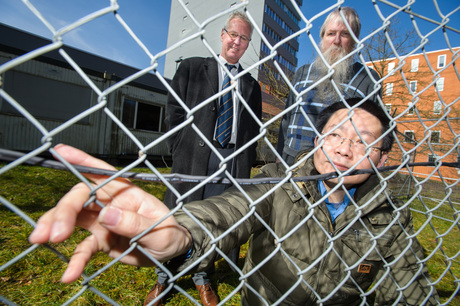Sensor cable monitors fences and can even detect low-level drone fly-bys

New technology containing magnetic field sensors is being developed by a team of experimental physicists in Germany to be used for surveillance in fenced-in places such as airports, nuclear power stations, industrial sites or even private plots of land.
The sensors respond immediately to disturbances, like fence cutting or a person climbing over the top, and provide information on the precise location of the security breach. They can even detect a low-flying metal drone passing overhead.
“Our magnetometers (magnetic field sensors) are highly sensitive and can reliably measure even the smallest of changes in the ambient magnetic field,” said Professor Uwe Hartmann, from Saarland University, who is heading up the project.
“The cable can be attached to a fence, built into it or even buried beneath it.”
The cable, with a diameter comparable to a standard electrical cable, contains linearly arranged magnetic field sensors. Once attached to, or near, perimeter fencing, the sensors are able to detect activity for kilometres along the line with a range extending out by several metres, which can all be monitored remotely.
The contactless sensors use low levels of power and are also unaffected by rain or fog.
“The sensors function independently of the weather and this gives them a significant advantage over other surveillance techniques, such as cameras, where moisture is often a problem,” Hartmann said.
“The measurements are unproblematic from the point of view of privacy. The sensors simply report that a vibrational disturbance was caused by a human agent at a specific location. No other information is gathered.”
The research team is currently attempting to teach the system to recognise the cause of a disturbance and therefore automatically identify false alarms such as animal movement or strong wind. Various disturbances are being simulated on Saarland University’s fences for long-term monitoring and data capture.
The team is collaborating with industrial partners to produce a cable suitable for mass production. A number of different types of sensor systems developed by the research group have already been deployed in airport traffic management systems.
The technology will be shown at the HANNOVER MESSE international industrial fair in April.
Foiling hackers in the smart home era
Australian researchers have devised a camera that obscures images beyond human recognition, thus...
Smart mobility in Helsinki
Helsinki is beating the world in smart mobility, according to the Urban Mobility Readiness Index...
Why indoor air quality is an urgent matter
While the pandemic highlighted the need to better protect people from airborne viruses and...







